Mālama: The word embodying the spirit of Hawaii
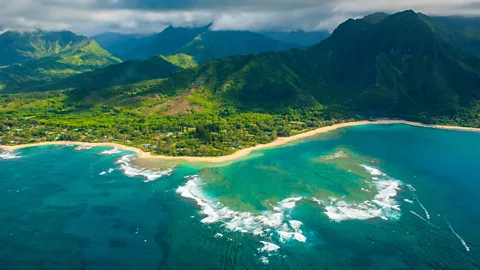 Alamy
AlamyMeaning "to give back", this ancient concept is a way of life – and a tourism initiative offering travellers fascinating local experiences and perks.
I watched as smooth, purple poi streamed from the grinder, filling a large bucket in the centre of the small room. Earlier, I'd scraped away the rough skin of taro (the Pacific's answer to the potato), washing and cubing them with a knife. From a raised ledge, two men waited to grind it into the thick, starchy paste that has sustained generations of Hawaiians.
My husband, children and I were at the Waipā Foundation headquarters; a nonprofit on Kaua'i's lush North Shore dedicated to land conservation and reviving traditional agricultural practices. Waipā exemplifies the ancient Hawaiian concept of mālama ("to care for") which encourages visitors to give back to the environment and local communities through activities like habitat restoration, beach cleanups or food provision. But Mālama goes beyond eco-tourism: it's about leaving a place better than you found it. And after seeking out these experiences during a three-week stay, we found mālama not only improves Hawaii, it also made our time there much more meaningful.
Mālama volunteer experiences are found across the islands. For example, on Maui, you can help restore native forests and volunteer at a nursery; while on O'ahu, visitors can clear invasive algae from Maunalua Bay, or lend a hand aboard the historic USS Missouri. In some cases, travellers booking with partnering hotels and participating in designated activities will qualify for a discounted – or even free – night at dozens of hotels and resorts, including the famous Four Seasons Resort Maui at Wailea where the first season of The White Lotus was filmed.
 Alamy
AlamyWe had begun the morning sipping traditional māmaki tea and eating homemade banana bread in the sunshine, as Waipā's guide, Kelsey Ke'alohilani Rogers, shared the legend of kalo (taro in Hawaiian) and how this root vegetable became an iconic part of Hawaiian culture. According to local beliefs, Earth Mother and Sky Father had a stillborn son. From the spot where he was buried, the first kalo plant grew, later nourishing their next son, Hāloa, the first human. "This is why kalo is more than food; it's family," Rogers explained.
The best of 2025
Hawaii was named one of BBC Travel's 25 best places to visit in 2025, a list highlighting destinations that are not only welcoming visitors, but using tourism as a force for good. See the full list here.
But keeping this sacred staple on Hawaiian tables is becoming harder. Land in Hawaii is expensive, and the high cost of living requires many families to work multiple jobs, which is why Waipā gives nutrient-rich poi away or sells it at cost to locals.
"Here, you're not just learning – you're supporting people by producing affordable food," Rogers added. "Simply paying for knowledge is extractive, but this is reciprocal." Waipā offers several food and farm tours, as well as a monthly volunteer morning to help with agroforestry, reforestation and removing invasive weeds.
The roots of mālama run deep. Hawaii is the most isolated archipelago on Earth, a volcanic cluster of eight main islands, marooned 2,390 miles south-west of California. Centuries before mass tourism, Hawaiians thrived under a sustainable resource management system known as ahupua'a. As she spoke, Rogers traced her finger along a colourful paper map showing how everything was interlinked from the mountains to the sea: what happened upland affected the reefs, waterways and forest. Mālama 'āina (caring for the land) has always been a deeply ingrained Hawaiian value – a fact the Mālama programme's participants are keen to teach visitors today.
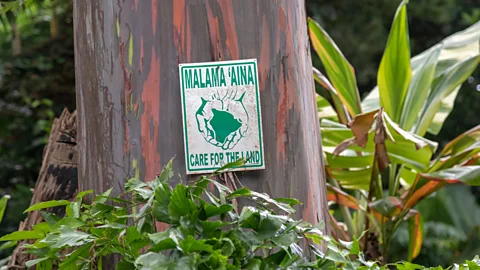 Alamy
Alamy"Living on these distant islands meant we had to be self-sufficient and understand our environment," she said. "The Western world was different – it just conquered and took what it needed."
Now, generations after Hawaii became a US state in 1959 and the rise of jet travel propelled this "Paradise of the Pacific" to become a major tourist destination, many Hawaiians and local residents believe a return to the islands' traditional ways is long overdue.
"Mālama today is more vital than ever," Rogers said. "Too many tourists trample over our land, ignoring restrictions and damaging sensitive ecosystems… Don't just think Hawaii is beautiful; help keep it that way. It's a shared responsibility." As Rogers explained, mālama isn't about seeing or appreciating a landscape; it invites visitors to connect and contribute to it, with the idea that caring for a place fosters a stronger relationship with it.
"Most tourists leave never knowing anything about our culture," she continued. "Despite what many think, it's not just about going to a lū'au or surfing."
Nearby, outside the poi mill in the Waipā base, I listened to the rhythmic sound of singing as Hawaiians joined hands in a piko (circle), symbolising connection, to bless the food.
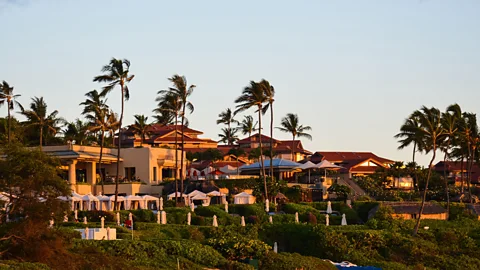 Alamy
AlamyAs part of the initiative, we stayed at two hotels that encourage mālama: the Grand Hyatt Kauai Resort & Spa, which offers a free fifth night if guests participate in a beach cleanup; and 1 Hotel Hanalei Bay. Both properties highlight mālama-focused experiences in their daily programmes, partnering with organisations like the National Tropical Botanical Garden, the Surfrider Foundation, Waipā and the Kaua'i Humane Society. Our youngest was especially keen to try the latter, which lets visitors adopt a shelter dog for the day and take it out exploring.
"For many, Hawaii is just a playground, a Disneyland," a lifeguard by the Hyatt hotel pool told me. "A huge number of homes have become holiday rentals, pushing locals out. If tourism is going to work here, it must benefit the local community."
After volunteering at the Waipā Foundation, we visited Common Ground, also on Kaua'i's North Shore – a regenerative farm that was once a sugar plantation, and which encourages mālama 'āina. We joined one of its food and feast tours, where guests are shown around before sharing a meal that celebrates the island's bounty.
"Monoculture plantations like sugar were run by big companies that came to our islands, stripped the soil bare, and then left," our guide, Sophia Reinheimer, explained. But this farm is different: here, the soil is nurtured through regenerative practices, such as planting diverse crops rather than just one. All of the ingredients used in the food served come from Kaua'i – either grown on the farm itself or sourced from nearby producers. That's rare in Hawaii, where 90% of the food is imported.
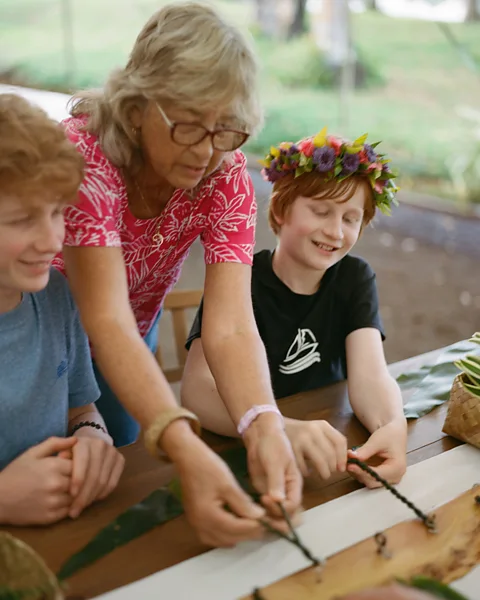 Kate Eshelby
Kate Eshelby"Mālama also means eating responsibly, choosing ocean-friendly restaurants and shopping at the many farmers'markets," Reinheimer added. But it extends beyond food – supporting local businesses and buying locally made souvenirs has a positive impact, too.
We also took part in a newly launched lei-making workshop in Common Ground's lush garden. As we twisted ti leaves into a lei hili (a rope-like lei), our teacher, Ivory Lloyd, shared the deeper significance behind the tradition. "Lei making is the ultimate expression of aloha (the Hawaiian belief that all things, people and nature, are connected and deserve love)," she said. "It connects us to the land; we honour the plants we use and ask permission before picking them."
Yet, like many aspects of Hawaiian culture, traditional lei-making faced obstacles. After Hawaii's 1898 annexation by the US, many cultural practices – including the Hawaiian language and hula – were banned. It wasn't until the Hawaiian Renaissance of the 1960s that these traditions began to revive, and today, mālama plays a role in keeping them alive.
Maile Brown from the Kaua'i Visitors Bureau told me how the mālama programme began. "After Covid, we saw how much healthier the land was without the crowds," she said. "We wanted to redefine tourism, to encourage greater respect for Hawaii's people and place."
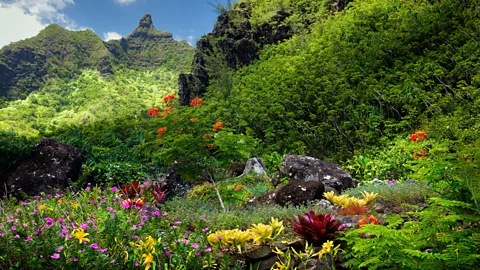 Alamy
AlamyWhat began as a list of participating businesses has evolved into a broader initiative, offering visitors opportunities to either volunteer during their stay, or engage with local businesses and nonprofits that embody mālama. Since Covid, the islands' message to visitors remains simple: come as you would into someone's home, and if you're willing, here's how you can help care for it.
"Tourism is about education," Brown continued. "If you leave understanding the complexity and beauty of a place, you develop a reverence for it." While volunteering is one way to practise mālama, learning about Hawaii is just as essential. "It's about perpetuating local culture," she continued. "This is our kuleana, our responsibility." Then, she added, with a smile, "Of course, be sure to enjoy the island's beauty, the variety of activities – just put mālama into the mix, and in your heart."
On another day, we joined the Surfrider Foundation, which organises beach cleanups for volunteers, including tourists. We were the only non-locals, so as we collected plastic, we talked about island life. At the end, as a rainbow revealed itself above, we shared homemade cookies and cupcakes. Our sons enjoyed exploring the beach while filling hessian sacks, and, under supervision, helped to cut the discarded ropes. It was shocking to learn that more than 52 metric tonnes of debris enter Hawaii every year – much of it from the Great Pacific Garbage Patch, with almost half composed of commercial fishing waste.
On our last day on Kaua'i, we went to Limahuli Garden & Preserve. While we chose to wander on our own, guided tours (Tuesdays and Thursdays at 09:00) highlight its conservation work. "We steward a modern ahupua'a," volunteer coordinator Sonia Adame said. Visitors can volunteer too, removing invasive species or planting in the nursery.
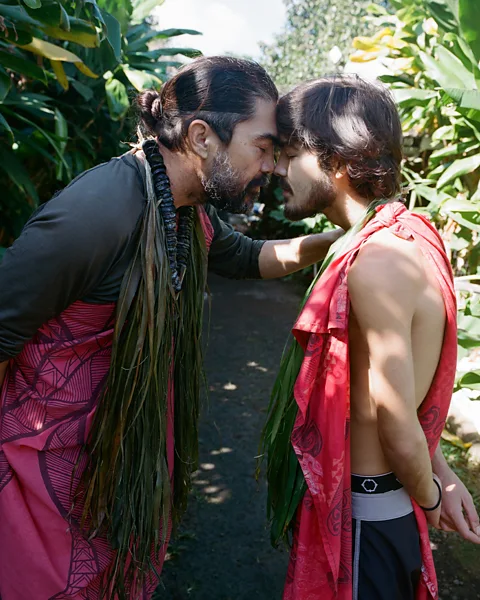 Kate Eshelby
Kate EshelbyAfter eight days on Kauai'i, we ventured to Molokai, the least visited of all the Hawaiian Islands. There are no resorts, no chain stores, no billboards – just swirling seas at the foot of some of the world's tallest cliffs, forests of flaming red ʻōhiʻa trees and candy-coloured clapboard churches.
We travelled deep into Hālawa Valley on the island’s far eastern edge to visit Greg Solatario, a native Hawaiian cultural practitioner who lives off-grid on the land his ancestors have stewarded for centuries. Solatario embodies mālama – committed to nurturing the land and preserving Hawaiian culture. After welcoming us into his home, he led us through long-abandoned villages lost to the jungle and moss-cloaked heiau (temples).
As we approached, his son, Devak stepped out to greet us and blew a conch shell, which his father answered with another. "This is to ask permission before entering the land," he explained.
But it was his parting words that lingered longest: mālama can, and should, be a global value, not just a Hawaiian one.
--
If you liked this story, sign up for The Essential List newsletter – a handpicked selection of features, videos and can't-miss news, delivered to your inbox twice a week.
